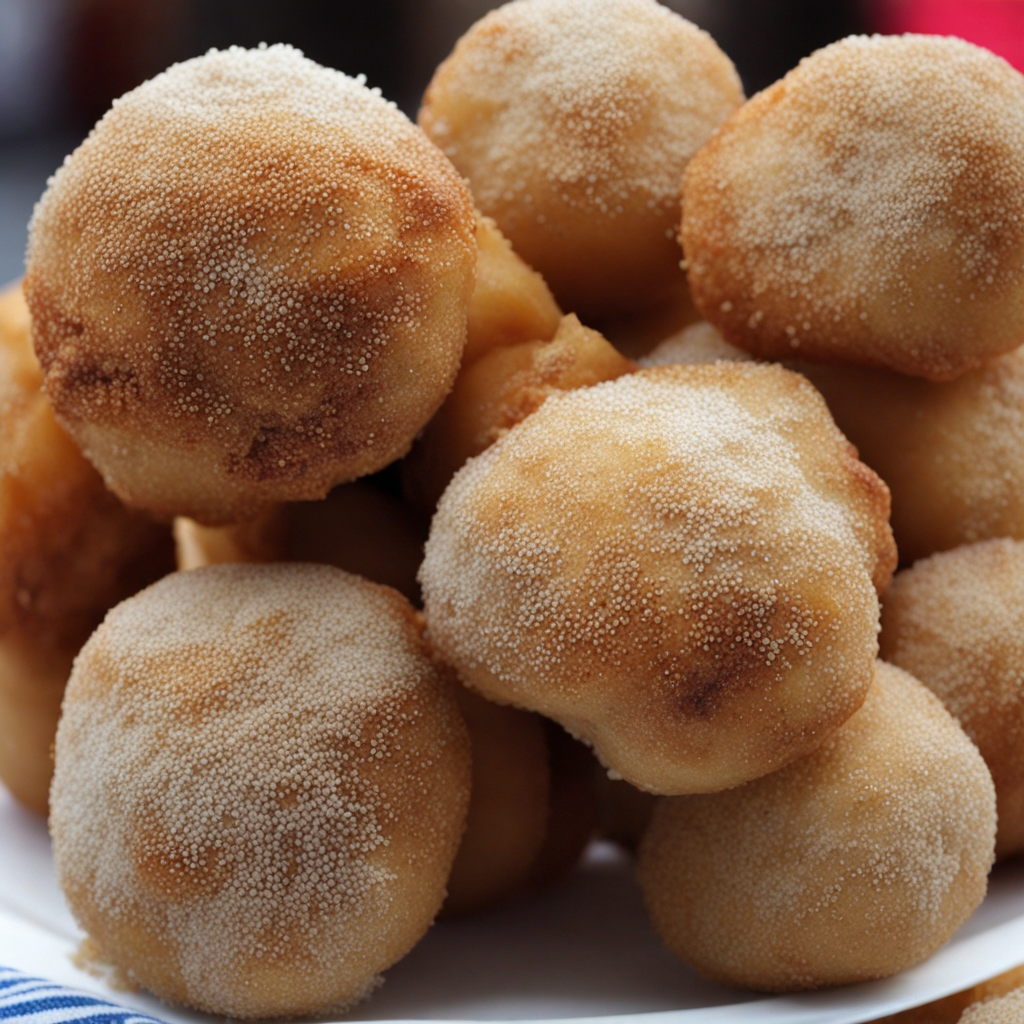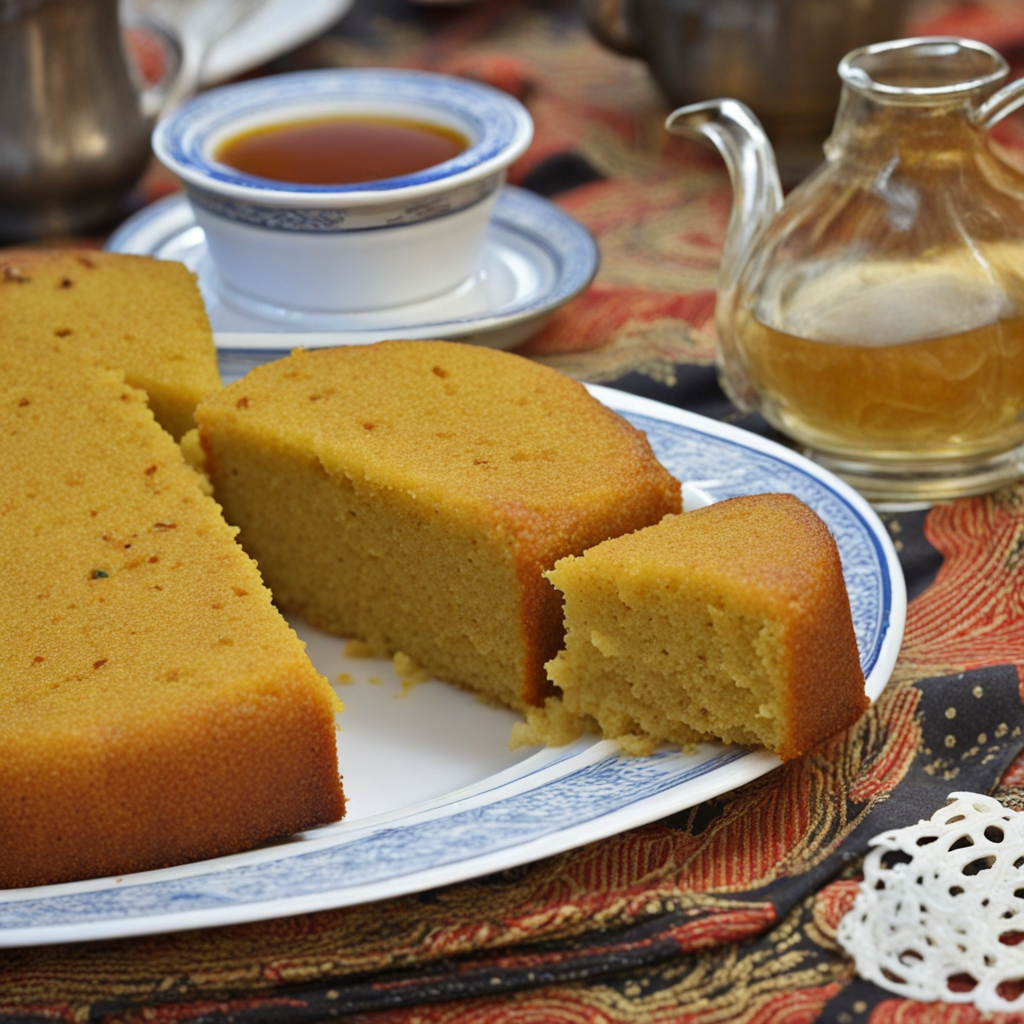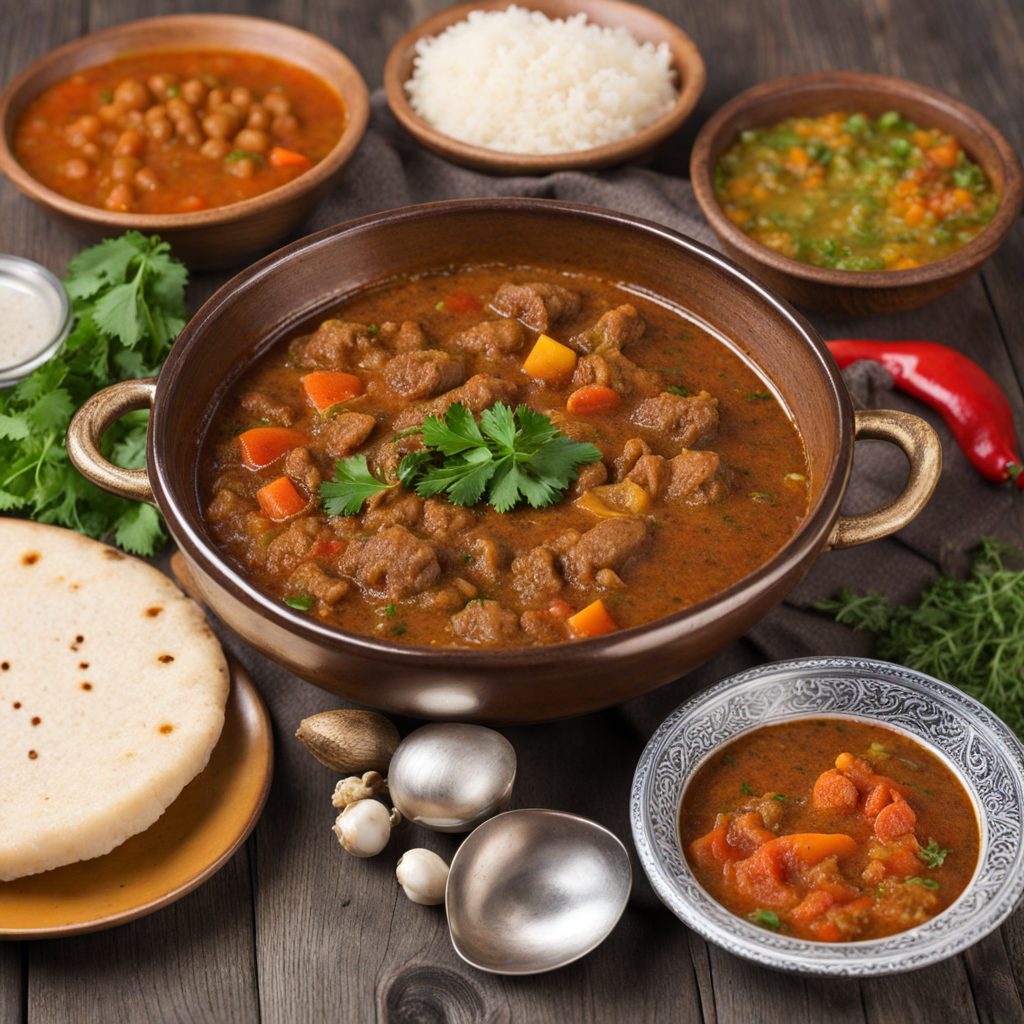Fataa
Fataa is a traditional Somali dish that beautifully embodies the rich flavors and culinary heritage of Somalia. This unique dish is typically made from a base of flatbread, known as 'laaxo,' which is similar to a pancake but has its own distinct texture and flavor. The flatbread is often layered with a variety of toppings, including seasoned meat, vegetables, and a tantalizing blend of spices that reflect the region's diverse influences. The combination of soft, warm bread with savory fillings creates a delightful experience for the palate, making Fataa a comforting and satisfying meal. The preparation of Fataa can vary by region and personal preference, but common ingredients include marinated beef or chicken that is slow-cooked to tender perfection, along with fresh vegetables such as tomatoes, onions, and peppers. The spices used in the dish often include cumin, coriander, and black pepper, which add depth and warmth to the overall flavor profile. This dish is not only a feast for the taste buds but also a visual delight, with its vibrant colors and enticing aroma inviting diners to dig in and savor every bite. Fataa is often enjoyed during communal meals, symbolizing the essence of Somali hospitality and togetherness. It is typically served with a side of spicy sauces or dips, which can enhance the flavors and add an extra kick. Whether enjoyed as a hearty breakfast, lunch, or dinner, Fataa offers a unique culinary experience that showcases the richness of Somali cuisine, making it a must-try for anyone eager to explore new tastes and flavors from around the world.
How It Became This Dish
The History of فطا (Fata) in Somalia Origins and Early Development Fata, a traditional Somali food, is more than just a meal; it is a symbol of heritage, community, and resilience. The origins of Fata can be traced back to the nomadic pastoralist lifestyle of the Somali people, who historically relied on livestock herding as their primary means of sustenance. The dish typically consists of a type of bread made from wheat or sorghum flour, which is cooked on a hot surface, similar to the way other flatbreads are prepared across the Horn of Africa and the broader East African region. The name "Fata" itself derives from the Arabic word "فطير" (fateer), reflecting the influence of Arab traders and settlers who arrived in the region centuries ago. This melding of cultures is a testament to Somalia's strategic location along the trade routes between the Middle East and the African continent. As a result, Fata not only showcases local ingredients but also embodies the confluence of diverse culinary traditions. Cultural Significance Fata holds a special place in Somali culture, often associated with communal gatherings and celebrations. It is common to find Fata being served during significant occasions such as weddings, religious festivals, and family reunions. The preparation of Fata is often a communal affair, involving family members coming together to make the dough, roll it out, and cook it on a traditional griddle known as a "saan." This process fosters a sense of unity and connection among participants, as stories and laughter echo through the kitchen. The dish is versatile, being served with an array of accompaniments. It can be eaten plain or with a variety of toppings, including honey, ghee, or stews made from meat and vegetables. In many households, it is common to see Fata being enjoyed alongside Somali tea, a spiced beverage that complements the flavors of the bread. This pairing not only highlights the dish's adaptability but also reinforces the notion of hospitality, as sharing food is a fundamental aspect of Somali culture. Evolution Over Time As Somalia has experienced various historical changes, so too has the preparation and consumption of Fata. In the early 20th century, the introduction of modern cooking techniques and conveniences began to alter traditional food practices. For instance, while Fata was initially made exclusively from hand-ground flour, the availability of industrially processed flour has made it easier for many families to prepare the dish. This shift has led to a slight change in texture and flavor but has not diminished the cultural significance of the bread. The civil war that erupted in the late 20th century and the subsequent unrest had profound effects on Somali society, including its culinary traditions. Many families were displaced, and access to traditional ingredients became limited. However, the resilience of the Somali people shone through during these challenging times. Creative adaptations of Fata emerged, with families using whatever ingredients were available, leading to variations in the dish that reflect local resourcefulness. In diaspora communities, particularly in the United States, Canada, and various European countries, traditional recipes for Fata have continued to evolve. Somali immigrants have adapted their culinary practices to incorporate ingredients that are more readily available in their new environments. For example, while traditional Fata may have been made primarily with sorghum flour, many in the diaspora now use wheat flour, reflecting the accessibility and affordability of ingredients in their host countries. This adaptation has allowed Fata to thrive outside Somalia, ensuring that future generations remain connected to their culinary heritage. Contemporary Significance Today, Fata serves as both a culinary staple and a cultural bridge for Somalis, particularly in the diaspora. Restaurants and food stalls featuring Somali cuisine have begun to sprout up in urban centers, providing opportunities for both Somalis and non-Somalis to experience this cherished dish. The rise of social media has also played a crucial role in this resurgence, with platforms like Instagram and TikTok showcasing the vibrant colors and textures of Somali food, including Fata. Home cooks and chefs alike share their variations of the dish, sparking interest and appreciation for Somali culinary traditions. Moreover, Fata has become emblematic of the broader Somali identity. In many ways, it represents the collective memory of a people who have navigated the complexities of migration, displacement, and cultural preservation. The act of making and sharing Fata transcends mere nourishment; it is a reaffirmation of identity, a way for Somalis to connect with their roots, and a means of passing traditions down to future generations. Conclusion Fata is more than just a dish; it is a cultural artifact that encapsulates the history, struggles, and triumphs of the Somali people. From its nomadic roots to its contemporary adaptations, Fata has evolved while maintaining its core significance as a symbol of community and resilience. As it continues to be shared across generations and cultural boundaries, Fata stands as a delicious reminder of the power of food to connect us to our past and to one another. Whether served at a festive gathering or enjoyed in the quiet of one's home, Fata remains a cherished emblem of Somali heritage, inviting all to partake in a rich and flavorful history.
You may like
Discover local flavors from Somalia







